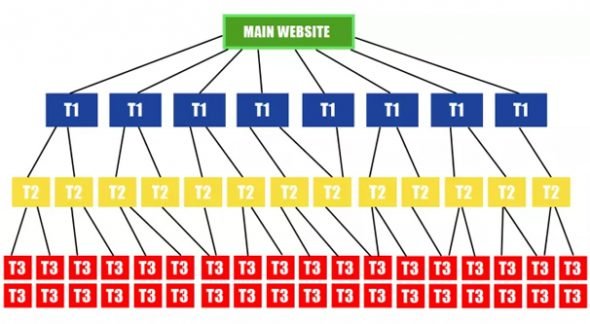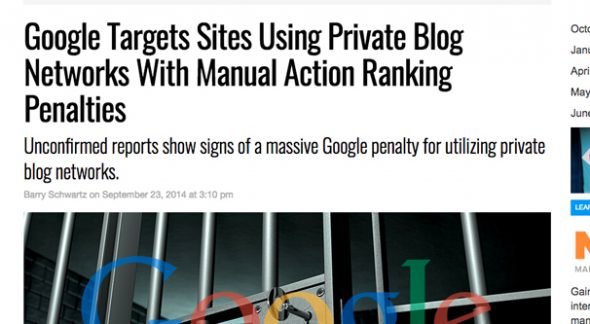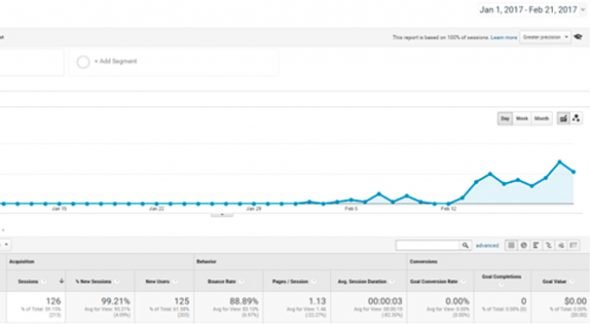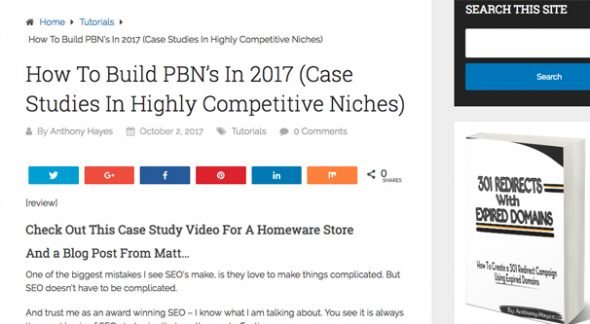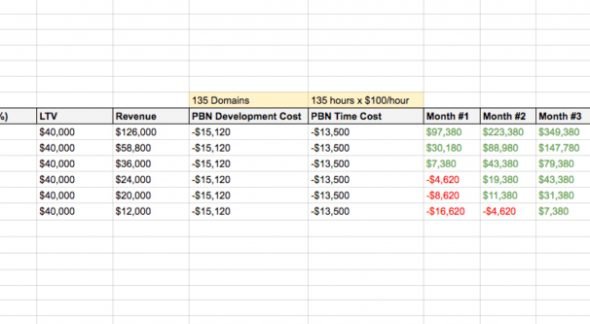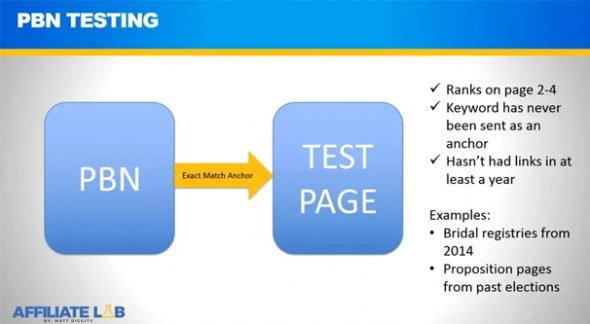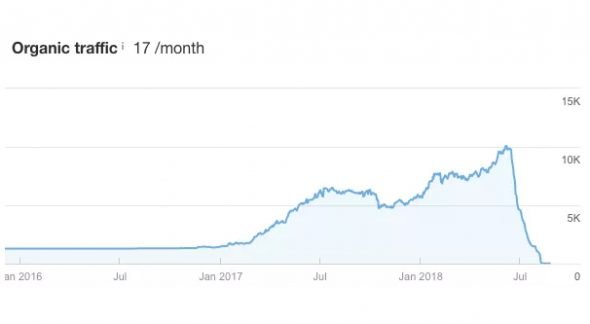The use of Private Blog Networks, or PBNs, is a contentious issue amongst marketers. Some will insist that they’re perfectly safe and effective. Others will admit that, while they are effective, they carry with them an element of risk. Others will tell you that they don’t work, they’re too risky to even attempt, and the penalties simply aren’t worthwhile.
Rather than give you my own opinion, I’ve looked around to find case studies about the effectiveness of PBN usage. Presented below are five such studies, with a summary of results and my own interpretation at the end. Feel free to draw your own conclusions, of course.
What is a PBN?
Before we dig into the case studies, let’s talk about what a PBN actually is, for those of you who might not know specifically what I’m talking about.
If you understand the basics of SEO, you know that the internet relies on links. Your site’s ranking is determined by many factors, but by far the most important is the number and variety of links pointing at your domain from other domains. Links from good, high quality, relevant sites can be very powerful, while links from less relevant and much smaller sites don’t carry as much weight. In general, though, they are the foundation of a site’s value.
A private blog network is essentially a network of websites all owned by the same person. There may be anywhere from half a dozen to over a hundred sites in a PBN. The fact that all of these sites are owned by the same person is not disclosed. The individual sites don’t need to be very good or powerful, though of course the better they are, the more powerful their links become. Importantly, none of the sites in the PBN link to each other, and steps are often taken to minimize any hint that they’re all controlled by the same person.
Usage of a PBN is simple. If you control the sites, you simply publish content on each site that includes a link to your main site, or “money site”, the one you want to reap the benefits of all of these other sites in the network. With 10+ Sites all giving you backlinks, you can boost your search ranking. If you don’t own the PBN, you can strike up a deal with the owner, often paying for links.
Is PBN Usage Illegal?
It’s not illegal to use a private blog network. There are no laws governing the creation or the linking of websites. However, you don’t have to content with laws when you’re dealing with web marketing, at least not beyond FTC regulations and laws against specific products, and so on. No, you need to content with Google’s rules.
Google is a monopoly on search, and as such, their word is essentially law. If they say a specific technique is disallowed, and they choose to penalize any site that uses the technique, it’s effectively illegal. Oh, you can certainly use the technique, but when Google discovers it, your site will tank and/or be removed from the search rankings entirely.
Obviously, when the survival of your business hinges on your search ranking and the traffic it brings in, you don’t want to step on the wrong site of the line Google draws in the sane.
If you know anything about how Google operates, it should come as no surprise that PBNs violate several major rules. Google hates money changing hands directly relating to search ranking – you can’t pay for a higher ranking directly – and they hate hidden techniques that boost the rank of a site artificially. Both of those are elements of PBN usage. Over the years, Google has taken a number of steps to devalue PBNs, but it’s not an easy task.
There’s no sweeping change Google can make that will make PBN usage ineffective. The only way they could do so would be to change the value of links, but links are so foundational to the search engine that they would need an entirely new system. Instead, they essentially play whack-a-mole with PBNs. They have a ton of different ways to detect a PBN, everything from sending a mole to buy links from known PBN sellers to searching using machine learning algorithms to spot patterns in links from supposedly unrelated sites. One recent update on this front came in February of last year.
Despite this, many people still claim PBNs are safe and usable even today. So now let’s look at the data.
1: Authority Website Income’s 2017 PBN Case Study
Pretty much every year, you’ll find a scramble in January and February to publish “is X still effective in This Year” articles springing up. Many marketers strive to be the first authoritative voice for that year. This is one such post, focused on 2017, shortly after Google’s update mentioned above.
For this case study, AWI looked at data about new sites made to add to PBNs. The intent was to test whether or not Google is doing what they claimed, and resetting link value and metrics for domains that expire and are re-registered with new content, a typical technique for PBN creators. They tested by registering five domains and creating new PBN sites for each.
The results seem to show that Google does indeed reset these sites, temporarily. The sites seemed to get sandboxed for about two weeks before Google comes to a determination as to the value of the site. Spam sites would be left with nothing, while legitimate looking sites would gain some value back. Note that this study only looks at the first month after site creation, and thus makes no claim as to the longevity of PBN usage.
Verdict: PBN creation is likely to be slightly delayed, and there’s always churn as Google detects and penalizes individual sites or chunks of a PBN. However, they have yet to find a way to preemptively identify and penalize good-looking PBN sites, making PBN usage remain effective for at least the short term.
2: Anthony Hayes’s PBN Building Case Study
This is an aggregate case study looking at data from other existing case studies regarding PBN usage. The PBN-related data is pretty buried under talk of more legitimate techniques, including on-site optimization, more organic link building, and other boosts. It’s also buried under a lot of marketing talk trying to sell courses, tools, and PBN building services, so take it all with a grain of salt.
The case study looks at a single site in the homeware niche that grew from 12,000 visitors per month to 60,000 visitors per month over the course of about three years. Revenue increased, according to their numbers, from about 100K per month to 1.2M per month. It’s obviously a very significant increase.
The problem with this case study is that it doesn’t isolate the PBN as a factor. Yes, there’s impressive growth, but that’s including every organic, paid, and black hat marketing technique used over the course of several years. There’s no real way to tell how effective the PBN was in the site’s growth, nor is there any guarantee of being able to replicate their success.
Verdict: too much sales, not enough data. This isn’t a very good case study, and mostly just uses some nice-looking numbers to try to sell PBN creation tools. I would discount this one entirely, more or less.
3: Gotch SEO’s Private Blog Network Analysis
Nathan Gotch is one of the most prominent names in gray and black hat marketing. His site pretty much constantly espouses the effectiveness of various shady techniques, along with better organic techniques to support them. He claims to be delivering the truth behind the propaganda, but how true is it?
This case study takes a relatively objective perspective towards PBNs. In fact, it begins with the various downsides to using PBNs. They can cost a lot of money and a ton of time, both to set up and to use. He estimates that in a moderately competitive niche, to rank effectively using PBNs would cost $28,000 or more. He then talks about other ways to spend an equivalent amount of money with other techniques.
Gotch, of course, goes on to talk about how effective PBNs are, the benefits of using them, and what a good idea it is. Unfortunately, he doesn’t present any specific data about sites he grew using PBNs, how their growth spiked, how long it lasted, or anything else. The cynical side of me recognizes that this isn’t really much of a case study, and was really just published January 1 to get the coveted 2018 iteration of the information for that sweet, sweet keyword juice.
Verdict: Gotch’s data estimates aren’t wrong, though they are only one example of a widely varied reality. PBNs can certainly cost a lot of time and money, and they can certainly give you a lot of control, but there’s no real data to back up anything he says.
4: Diggity Marketing’s 11 PBN Experiments
Finally, a case study with data! Matt Diggity used to run a broad private blog network that would rigorously test new domains before adding them to the network. If a link from a new site improved the ranking of a test domain, it would be added to the PBN. If not, it was ditched. A Google change in early 2017 caused the success rate of such additions to drop to 20%, with as many as 50% of the domains actually hurting the sites they linked to instead of helping them.
This large case study was an experiment in reaction to those changes. The study includes 11 experiments involving over 300 different PBN sites. You can read the methodology and the specific data, but here are the conclusions:
- New domains added to a PBN are valueless or toxic initially, but can regain their value if left alone for a while first.
- Despite Google’s claims, the backlink profile of an expired domain does not reset when it’s expired.
- Sites in a PBN do not need traffic to pass link value.
- Using archives to restore old content makes a PBN site more valuable.
- Google appears to filter domains registered via dropcatch and other exploited services.
- Domains that expire and are re-registered multiple times tend to have a harder time passing positive value.
Verdict: All in all, PBN usage is still a viable technique, but is nowhere near as simple as it once was. It’s very easy to buy a PBN builder or hire a freelancer to build a PBN for you, but if those services don’t know what they’re doing, the chances are pretty good that their PBN will be largely ineffective. Meanwhile, being careful with building a PBN can bring in excellent results, though still nowhere near how they worked in their heyday a decade ago.
5: Skipblast’s PBN Case Study
This is another good quality case study involving around 300 PBN sites of varying ages and in varying niches, as well as purchased links from a variety of other sources. The experiment covers over a year of near-monthly actions and recording their results, giving some decent long-term data to look at. You can follow the link to read exactly what actions he took each month.
The results are rather expected: the PBN money site took off and made as much as $2,000 per month for nearly two years. Then, abruptly, the site was audited and given an unnatural backlinks penalty, tanking it nearly overnight and removing all value. The surprising thing is how long it took; Google didn’t penalize this site with intentionally bad links from intentionally obvious PBNs for two years.
Verdict: PBNs work, even the bad ones, but when they come back to bite you, it’s devastating. Depending on your reliance on the PBN links, it may be impossible to recover.
Final Conclusion
In my experience, PBN usage works, but is very risky. If you’re the kind of person who wants to drop $5,000 to earn $20,000, with no long-term prospects, then it’s a perfectly viable technique. If, on the other hand, your goal is to build an authority site that will rank well and last for years or decades, bringing in consistent customers and a passive income stream that can last indefinitely, PBNs will crush your dreams. As with any black hat technique, exercise extreme caution and know what you’re getting into.
 ContentPowered.com
ContentPowered.com

